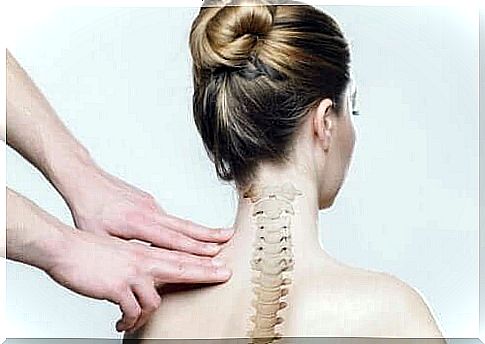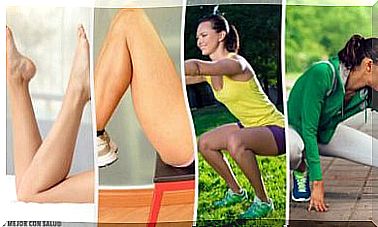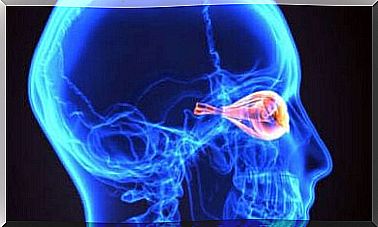Tips For Maintaining Good Postural Hygiene

Postural hygiene refers to a set of recommendations to avoid back pain, with adequate protection of the spine. This group of bones is vitally important to everyday life.
People tend to experience neck or lower back pain relatively often. It is true that these pains have different causes, but fortunately, only a very small percentage of them are the consequence of serious problems.
In many cases, the modern pace of life is a factor that influences the presence of pain, since sedentary lifestyle is a circumstance that causes discomfort in the back and neck. To this, there are bad postures.
We will see below what are the consequences of a sedentary life and the keys to maintaining good postural hygiene.
What are the consequences of a sedentary life?
Inactivity is usually the consequence of a sedentary life. This is associated with the fact that we maintain the same body position for long periods, because the lack of rotation numbs the muscles and tendons.
Due to the conditions of modern life, there is a greater use of means of transport and less walking for daily commuting. Motor vehicles help to intensify the sedentary lifestyle.
Due to appointments and schedules, people of working age do less physical activity, which translates into an increase in weight and contributes to the global obesity epidemic. As a result, the muscles also suffer and weaken.

Be sure to read: Guidelines for dealing with sedentary lifestyle at work
What is postural hygiene?
To combat the bone and muscle consequences that sedentary lifestyle causes, postural hygiene emerged. Basically, we are talking about corrections when sitting and standing, as well as changes in sleeping positions.
In the most active part, postural hygiene also helps us to carry weight in a healthy way and to carry out physical activities with the correct parameters so that we don’t get hurt. We will see in detail each of the keys to maintain good postural hygiene.
Corrections for sitting and standing
These are the proposals:
- Avoid staying for long periods of time in the same position, ideally not to exceed 30 minutes.
- Maintain correct posture when sitting, without a forward head position.
- Keep your head and torso aligned.
- Do not stand for long periods with your head facing down or up.
- When using computers, position the monitor at eye level. The keyboard, in turn, must be wide.
- Pay attention to the need to wear glasses if there are visual disturbances.
- Use chairs that allow you to sit with your back flat and your feet flat on the floor. Prefer those that have arms.
sleeping postures
To sleep, prefer the position on your side and on your back. This should be combined with the use of a single pillow, neither too low nor too high.
As in the upright posture, the head and torso should be aligned, without placing your hands under your skull or keeping your mouth down. The mattress is essential for postural hygiene during sleep, since it will be impossible to compensate for its poor quality with the positions.
The place to sleep is the bed. Resting on furniture not prepared for this function is counterproductive, such as on the sofa or armchairs.
Care when carrying weight
If you are going to carry weight or have to do work that requires strength, it is important to follow these recommendations:
- Distribute the load between your upper limbs or shoulders if you are carrying a weight or backpack.
- If you need to lift a weight off the floor, bend your knees to pick it up.
- Use a stool or ladder if you need to pick up objects that are above your shoulders.
- Keep loads close to the body.
- Learn to position yourself correctly, favoring column alignment and load distribution.

Physical activity and postural hygiene
It is suggested to carry out physical activity several times a week, of the aerobic type. Examples of recommended activities include walking, running, swimming and cycling. In this way, the sedentary lifestyle we are often forced into will be balanced. Physical activity should be combined with stretching exercises.
Even at work, it is advisable to stay active whenever possible. In addition, on the way to work environments, the use of less motorized means of transport is suggested. In fact, even indoors, a form of minimal mobility can be adopted, such as walking while talking on the phone.
What is the purpose of good postural hygiene?
The main benefit will be the protection of the joints along the spine, in addition to preventing contractures in the back and neck region. This will improve movement and avoid pain.
We could add to all this the importance of maintaining a healthy life, avoiding excess weight and limiting stressful situations.
Back and neck pain often end up limiting our ability. Furthermore, they are also recurrent. In some patients, there are situations where back and neck contractures require specific treatment.
If the pain persists over time or worsens in intensity, it is recommended to consult your doctor or spine specialist. He will know how to diagnose the problem and indicate the appropriate treatment.









